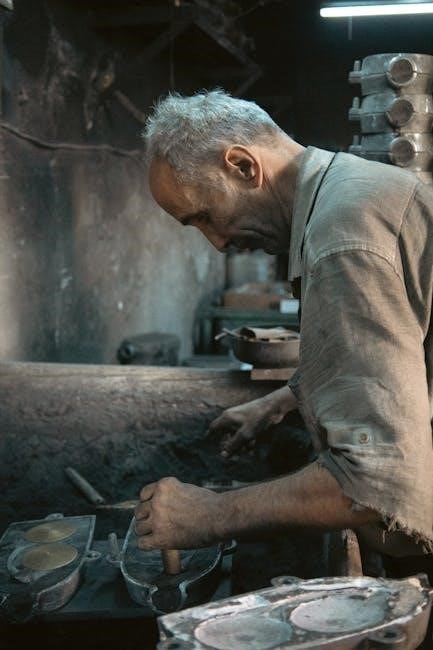The Smith & Nephew PICO 7 is a portable, single-use negative pressure wound therapy system designed for wound management. It offers a compact, user-friendly design, enabling up to 7 days of continuous therapy. Intended for use under medical supervision, it is suitable for various wound types, including surgical incisions and chronic wounds. The system incorporates proprietary AIRLOCK Technology to maintain consistent negative pressure, promoting wound healing. Its lightweight and discreet design enhances patient mobility, making it an innovative solution in wound care.
1.1 Overview of the PICO 7 System
The Smith & Nephew PICO 7 System is a single-use negative pressure wound therapy (NPWT) device designed for portability and ease of use. It delivers consistent negative pressure up to 7 days, making it suitable for various wound types, including chronic wounds and surgical incisions. The system features a lightweight, compact pump and a proprietary dressing with AIRLOCK Technology, which helps maintain therapy integrity. Intended for use under medical supervision, the PICO 7 promotes wound healing by removing fluid and reducing bacterial load. Its design enhances patient mobility and comfort, offering a discreet solution for wound care. The system is supported by comprehensive instructions for healthcare professionals, ensuring proper application and operation.
1.2 Purpose and Intended Use
The Smith & Nephew PICO 7 System is designed to promote wound healing by applying negative pressure to remove excess fluid and reduce bacterial load. It is intended for use in patients requiring negative pressure wound therapy (NPWT) for wounds such as surgical incisions, chronic wounds, or other wounds requiring drainage. The system is specifically designed for use under the direction of a trained healthcare professional. Its purpose is to enhance wound healing outcomes by maintaining a consistent negative pressure environment, which can help reduce the risk of complications and improve wound closure rates. The PICO 7 is not intended for use in patients with certain contraindications, such as untreated osteomyelitis or exposed blood vessels.
1.3 Key Features of the PICO 7 Device
The PICO 7 device is a single-use negative pressure wound therapy (NPWT) system designed for up to 7 days of continuous use. It features proprietary AIRLOCK Technology, which helps maintain consistent negative pressure to promote wound healing. The device is lightweight and portable, enabling patient mobility and ease of use. Visual indicators provide status updates and troubleshooting guidance, as there are no audible alerts. The system allows for the simultaneous treatment of up to two wounds and offers a discreet design to enhance patient comfort. Additionally, the PICO 7 is FDA cleared, ensuring it meets rigorous safety and efficacy standards for wound therapy applications.

User Manual and Instructions for Use
The PICO 7 User Manual provides comprehensive instructions for healthcare professionals on setup, operation, and troubleshooting. It includes visual indicators for status updates without audible alerts.
2.1 Preparing the PICO 7 Pump
Preparing the PICO 7 Pump involves ensuring it is ready for use. First, inspect the pump for any damage or visible wear. Charge the battery fully if necessary, as the system does not include audible alerts. Ensure all indicators are functioning properly and no alarms are active. Refer to the user manual for specific charging instructions. Once prepared, attach the pump securely to the patient’s clothing or a convenient location, ensuring easy access for monitoring. The pump is designed to be portable, allowing patients to move freely during therapy. Always follow the manufacturer’s guidelines for preparation to ensure proper function and safety.
2.2 Applying the PICO 7 Dressing
Applying the PICO 7 Dressing begins with ensuring the wound is clean and prepared according to medical protocol. Peel the backing from the dressing and place it over the wound, smoothing out any air pockets or creases. Secure the dressing firmly to the surrounding skin to create an airtight seal. Connect the pump to the dressing as per the instructions, ensuring the tubing is properly attached. Check for any air leaks by observing the pump’s indicators. If the orange air leak indicator flashes, re-smooth the dressing and ensure all edges are securely sealed. Once applied correctly, the pump will begin therapy automatically. Refer to the user manual for detailed steps and troubleshooting guidance.
2.3 Operating the PICO 7 System
Operating the PICO 7 System involves monitoring its performance and ensuring proper function. The pump features visual indicators, such as the green “OK” light and orange air leak indicator, to communicate status. If the orange leak indicator flashes, check the dressing for air leaks and smooth out any creases. Press the orange button to restart therapy, allowing up to 65 seconds for the system to re-establish negative pressure. The pump operates silently, with no audible alerts, so regular visual checks are essential. Ensure the pump is accessible for routine monitoring and troubleshooting. Refer to the user manual for detailed instructions on interpreting indicators and resolving issues during operation.
2.4 Monitoring the Therapy
Monitoring the PICO 7 System involves regularly checking the pump’s status indicators and ensuring the dressing remains intact. The green “OK” light indicates normal operation, while the orange indicators signal issues like air leaks or low battery. Patients or caregivers should inspect the dressing for creases or detachment and ensure the pump is functioning quietly. Any unusual noise or vibration warrants immediate attention. Healthcare professionals should assess wound progress and adjust settings as needed; The system’s portability allows continuous monitoring without restricting patient movement. Refer to the user manual for guidance on interpreting indicators and addressing alarms to ensure effective therapy and optimal wound healing outcomes. Regular checks help prevent complications and maintain therapy efficacy.

Indications and Contraindications
The PICO 7 is indicated for use in managing chronic wounds, surgical incisions, and traumatic wounds. It is contraindicated for untreated osteomyelitis or necrotic wounds without debridement.
3.1 Approved Uses for PICO 7
The PICO 7 system is FDA-cleared for use in managing chronic wounds, such as diabetic foot ulcers, venous leg ulcers, and pressure ulcers. It is also approved for treating traumatic wounds, surgical wounds, and burns. The system is designed to deliver negative pressure wound therapy (NPWT) to promote wound healing by removing excess fluids, reducing bacterial load, and enhancing granulation tissue formation. Additionally, PICO 7 is indicated for use on closed surgical incisions to reduce the risk of complications, such as seroma or hematoma formation. Its single-use design makes it suitable for both inpatient and outpatient settings, providing a portable and easy-to-use solution for wound care.
3.2 Conditions Where PICO 7 Should Not Be Used
The PICO 7 system is contraindicated for use on necrotic tissue, exposed blood vessels, or in the presence of active bleeding. It should not be applied over malignant wounds or areas with untreated osteomyelitis. The system is also not suitable for use on pediatric patients without medical supervision or on individuals with sensitivity to the dressing materials. Additionally, PICO 7 should not be used in cases where the wound is infected or requires surgical intervention. It is essential to avoid using the system on areas with fragile skin or where adhesion could cause tissue damage. Always consult the instructions for use and seek professional medical advice before applying the PICO 7 system.
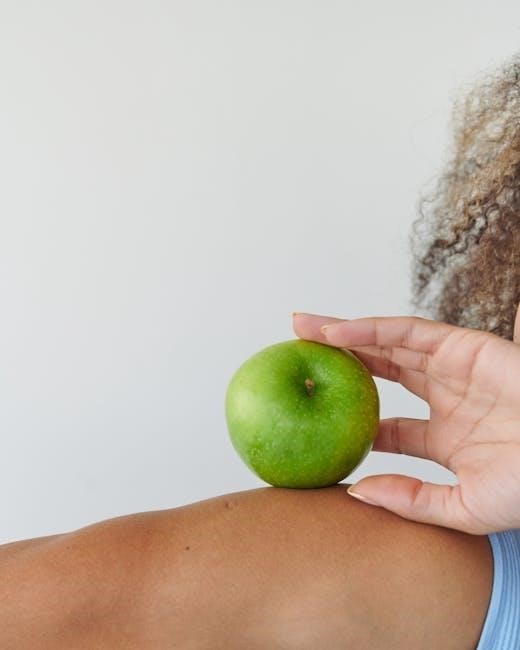
Application Process
The PICO 7 application process involves preparing the wound, applying the dressing, and securing it according to the instructions for use. This ensures proper therapy initiation and effectiveness.
4.1 Wound Preparation
Proper wound preparation is essential for effective therapy with the PICO 7 system. Begin by cleansing the wound according to clinical guidelines to remove debris, bacteria, and dead tissue. Ensure the wound bed is clean and dry before applying the dressing. Any excess fluid or necrotic tissue must be addressed to promote a healthy environment for healing. The surrounding skin should be intact and free from irritation to ensure proper adhesion of the dressing. Follow the instructions for use carefully to prepare the wound, as improper preparation may lead to reduced therapy effectiveness or complications. This step is critical for optimizing the benefits of negative pressure wound therapy.
4.2 Dressing Application Steps
Applying the PICO 7 dressing involves several precise steps to ensure proper therapy delivery. Start by peeling the backing from the dressing, taking care to handle it by the tabs to avoid touching the adhesive surface. Place the dressing over the prepared wound, ensuring the foam interface is centered and evenly spread. Smooth the dressing across the wound bed, working from the center outward to eliminate air pockets. Secure the dressing firmly around the wound edges to create a tight seal, which is critical for maintaining negative pressure. Connect the PICO 7 pump to the dressing according to the instructions for use. Finally, turn on the pump and verify that therapy has started. Proper application ensures effective wound healing and minimizes complications.
4.3 Securing the Dressing
Securing the PICO 7 dressing is crucial for maintaining proper therapy. After placing the dressing over the wound, smooth out any creases or air pockets by gently pressing the adhesive borders. Ensure the dressing is tightly sealed around the wound edges to prevent air leaks. Use the tabs on the dressing to press firmly and confirm adhesion. Check the dressing for any signs of lifting or gaps, as these can compromise the seal. If necessary, reinforce the edges with additional adhesive strips provided. Proper securing ensures consistent negative pressure and effective therapy delivery. Improperly secured dressings may lead to therapy failure, so verify the seal before initiating the pump. Follow the instructions for use for detailed guidance on securing the dressing effectively.

Troubleshooting Common Issues
Address common issues like air leaks, low battery, or pump malfunctions by checking the dressing seal, replacing batteries, or restarting therapy as indicated in the manual.
5.1 Identifying Air Leaks
The PICO 7 system uses visual indicators to signal issues, such as air leaks. If the orange leak indicator flashes, it indicates a high air leak. To identify the source, inspect the dressing for creases, improper seals, or dislodged components. Ensure the dressing is smooth and evenly applied, with all edges securely adhered to the skin. If the leak persists, check for damage to the dressing or pump. Addressing air leaks promptly ensures continuous therapy and optimal wound healing. Refer to the user manual for detailed troubleshooting steps to resolve the issue effectively. Proper maintenance of the system is crucial for consistent negative pressure delivery.
5.2 Resolving Battery Low Indicators
The PICO 7 system alerts users to low battery levels through a flashing orange battery low indicator. If this occurs, replace the batteries promptly to ensure continuous therapy. Locate the battery compartment, typically found on the underside of the pump, and open it carefully. Remove the old batteries and insert new ones, ensuring they are of the correct type and properly oriented. Close the compartment securely and press the orange button to restart therapy. If the low battery indicator persists after replacement, contact a healthcare professional for assistance. Proper battery maintenance is essential for uninterrupted negative pressure delivery and effective wound healing. Always refer to the user manual for detailed instructions on battery replacement and troubleshooting.
5.3 Addressing Pump Malfunctions
If the PICO 7 pump malfunctions, check for visual indicators like the orange leak or battery low lights. Ensure the dressing is secure and free of air leaks. If issues persist, restart therapy by pressing the orange button. If the pump fails to restart, inspect for damage or blockages. Replace the dressing or consult a healthcare professional if problems remain unresolved. Regularly monitor the pump’s status to prevent unexpected malfunctions. Always follow the user manual for troubleshooting steps and seek professional assistance when necessary. Proper maintenance ensures continuous therapy and optimal wound healing outcomes. Addressing malfunctions promptly helps maintain therapeutic effectiveness and patient comfort.
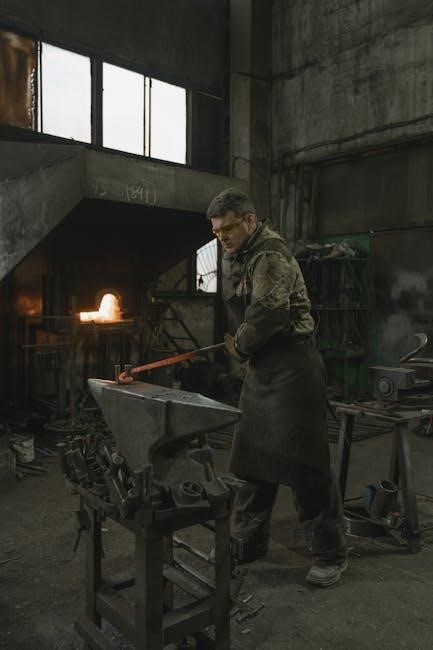
Maintenance and Disposal
Regularly clean the PICO 7 pump with mild soap and water. Dispose of used dressings as biohazard waste. Store the system in a dry, cool place, avoiding direct sunlight and moisture. Ensure all components are securely packed to maintain functionality. Proper maintenance and disposal ensure safety and effectiveness for future use. Always follow local regulations for medical device disposal. Keep the pump away from children and pets. Regular cleaning prevents contamination and extends device lifespan. Proper storage maintains the integrity of the system for optimal performance. Dispose of batteries separately, adhering to environmental guidelines. Maintain the system in its original packaging when not in use. Clean and store the pump according to the user manual instructions. Ensure all parts are dry before storing to prevent mold or damage. Dispose of any damaged components immediately. Keep the system away from extreme temperatures to preserve battery life. Regularly inspect the pump for wear and tear. Replace any worn-out parts promptly. Ensure the pump is fully dry before storing to prevent bacterial growth. Dispose of accessories like dressings and canisters responsibly. Follow local healthcare protocols for waste disposal. Store the pump in an upright position to avoid leakage. Keep the system in a secure location to prevent unauthorized use. Ensure the pump is turned off before cleaning or storing. Dispose of packaging materials separately, recycling where possible. Regular maintenance ensures the pump remains functional for future therapies. Proper disposal protects the environment and public health. Always check for updates or guidelines from Smith & Nephew for maintenance and disposal. Maintain a record of cleaning and disposal for quality control. Ensure all staff handling the system are trained in proper maintenance and disposal procedures. Regular audits ensure compliance with safety and environmental regulations. Proper maintenance and disposal are critical for patient safety and device longevity. Follow all local and manufacturer guidelines for handling medical devices. Dispose of the system at the end of its lifecycle responsibly. Clean and maintain the pump according to the user manual to ensure optimal performance. Store the system in a clean, dry environment to prevent damage. Dispose of used dressings and components as biohazard waste. Ensure the pump is free from debris before storing. Regularly check for software updates for the pump; Dispose of batteries in accordance with local regulations. Store the system in its original packaging to maintain integrity. Clean the pump with gentle cleaning products to avoid damage. Dispose of the system responsibly at the end of its use. Follow the user manual for detailed maintenance and disposal instructions. Ensure all parts are included when storing the system. Dispose of any contaminated components immediately. Regularly inspect the pump for signs of wear. Store the system in a secure, dry location. Dispose of the pump and accessories as medical waste. Follow Smith & Nephew’s guidelines for proper maintenance and disposal. Ensure the pump is clean and dry before storage. Dispose of used dressings and canisters according to local protocols. Regular maintenance ensures the pump remains effective for wound therapy. Proper disposal protects patients and the environment. Always follow the user manual for maintenance and disposal procedures. Store the pump in a cool, dry place away from direct sunlight. Dispose of the system and accessories responsibly. Regularly clean and maintain the pump to ensure optimal function. Follow local regulations for medical device disposal. Ensure the pump is stored securely to prevent damage. Dispose of used components as biohazard waste. Regular maintenance extends the lifespan of the pump. Proper disposal ensures safety and environmental protection. Follow the user manual for detailed instructions on maintenance and disposal. Store the pump in its original packaging to maintain functionality. Dispose of the system responsibly at the end of its lifecycle. Ensure the pump is clean and dry before storage. Dispose of any damaged or contaminated parts immediately. Regularly inspect the pump for damage or wear. Store the system in a secure, dry location. Dispose of used dressings and canisters as medical waste. Follow Smith & Nephew’s guidelines for proper maintenance and disposal. Ensure the pump is free from debris before storing. Regularly check for software updates for optimal performance. Dispose of batteries according to local regulations. Store the system in its original packaging to maintain integrity. Clean the pump with gentle cleaning products to avoid damage. Dispose of the system responsibly at the end of its use. Follow the user manual for detailed maintenance and disposal instructions. Ensure all parts are included when storing the system. Dispose of any contaminated components immediately. Regularly inspect the pump for signs of wear. Store the system in a secure, dry location. Dispose of the pump and accessories as medical waste. Follow Smith & Nephew’s guidelines for proper maintenance and disposal. Ensure the pump is clean and dry before storage. Dispose of used dressings and canisters according to local protocols. Regular maintenance ensures the pump remains effective for wound therapy. Proper disposal protects patients and the environment. Always follow the user manual for maintenance and disposal procedures. Store the pump in a cool, dry place away from direct sunlight. Dispose of the system and accessories responsibly. Regularly clean and maintain the pump to ensure optimal function. Follow local regulations for medical device disposal. Ensure the pump is stored securely to prevent damage. Dispose of used components as biohazard waste. Regular maintenance extends the lifespan of the pump. Proper disposal ensures safety and environmental protection. Follow the user manual for detailed instructions on maintenance and disposal. Store the pump in its original packaging to maintain functionality. Dispose of the system responsibly at the end of its lifecycle. Ensure the pump is clean and dry before storage. Dispose of any damaged or contaminated parts immediately. Regularly inspect the pump for damage or wear. Store the system in a secure, dry location. Dispose of used dressings and canisters as medical waste. Follow Smith & Nephew’s guidelines for proper maintenance and disposal. Ensure the pump is free from debris before storing. Regularly check for software updates for optimal performance. Dispose of batteries according to local regulations. Store the system in its original packaging to maintain integrity. Clean the pump with gentle cleaning products to avoid damage. Dispose of the system responsibly at the end of its use. Follow the user manual for detailed maintenance and disposal instructions. Ensure all parts are included when storing the system. Dispose of any contaminated components immediately. Regularly inspect the pump for signs of wear. Store the system in a secure, dry location. Dispose of the pump and accessories as medical waste. Follow Smith & Nephew’s guidelines for proper maintenance and disposal. Ensure the pump is clean and dry before storage. Dispose of used dressings and canisters according to local protocols. Regular maintenance ensures the pump remains effective for wound therapy. Proper disposal protects patients and the environment. Always follow the user manual for maintenance and disposal procedures. Store the pump in a cool, dry place away from direct sunlight. Dispose of the system and accessories responsibly. Regularly clean and maintain the pump to ensure optimal function. Follow local regulations for medical device disposal. Ensure the pump is stored securely to prevent damage. Dispose of used components as biohazard waste. Regular maintenance extends the lifespan of the pump. Proper disposal ensures safety and environmental protection. Follow the user manual for detailed instructions on maintenance and disposal. Store the pump in its original packaging to maintain functionality. Dispose of the system responsibly at the end of its lifecycle. Ensure the pump is clean and dry before storage. Dispose of any damaged or contaminated parts immediately. Regularly inspect the pump for damage or wear. Store the system in a secure, dry location. Dispose of used dressings and canisters as medical waste. Follow Smith & Nephew’s guidelines for proper maintenance and disposal. Ensure the pump is free from debris before storing. Regularly check for software updates for optimal performance. Dispose of batteries according to local regulations. Store the system in its original packaging to maintain integrity. Clean the pump with gentle cleaning products to avoid damage. Dispose of the system responsibly at the end of its use. Follow the user manual for detailed maintenance and disposal instructions. Ensure all parts are included when storing the system. Dispose of any contaminated components immediately. Regularly inspect the pump for signs of wear. Store the system in a secure, dry location. Dispose of the pump and accessories as medical waste. Follow Smith & Nephew’s guidelines for proper maintenance and disposal. Ensure the pump is clean and dry before storage. Dispose of used dressings and canisters according to local protocols. Regular maintenance ensures the pump remains effective for wound therapy. Proper disposal protects patients and the environment. Always follow the user manual for maintenance and disposal procedures. Store the pump in a cool, dry place away from direct sunlight. Dispose of the system and accessories responsibly. Regularly clean and maintain the pump to ensure optimal function. Follow local regulations for medical device disposal. Ensure the pump is stored securely to prevent damage. Dispose of used components as biohazard waste. Regular maintenance extends the lifespan of the pump. Proper disposal ensures safety and environmental protection. Follow the user manual for detailed instructions on maintenance and disposal. Store the pump in its original packaging to maintain functionality. Dispose of the system responsibly at the end of its lifecycle. Ensure the pump is clean and dry before storage. Dispose of any damaged or contaminated parts immediately. Regularly inspect the pump for damage or wear. Store the system in a secure, dry location. Dispose of used dressings and canisters as medical waste. Follow Smith & Nephew’s guidelines for proper maintenance and disposal. Ensure the pump is free from debris before storing. Regularly check for software updates for optimal performance. Dispose of batteries according to local regulations. Store the system in its original packaging to maintain integrity. Clean the pump
6.1 Cleaning the Pump
Cleaning the PICO 7 pump is essential for maintaining its functionality and ensuring patient safety. Use mild soap and warm water to gently wipe the exterior with a soft, damp cloth. Avoid using harsh chemicals, abrasive materials, or submerging the pump in water. Ensure all surfaces are clean and free from debris or residue. After cleaning, thoroughly dry the pump with a clean, dry cloth to prevent moisture buildup. Regular cleaning prevents contamination and extends the lifespan of the device. Always store the cleaned pump in a dry, secure location, following the instructions provided in the user manual. Proper cleaning ensures the pump remains ready for future use and maintains its effectiveness in wound therapy. Adhere to these guidelines to uphold the integrity and performance of the PICO 7 system.
6.2 Proper Disposal of Used Dressings
Proper disposal of used PICO 7 dressings is crucial to prevent biohazard contamination and ensure environmental safety. After removing the dressing, place it in a biohazard waste bag immediately. Seal the bag securely to prevent any leakage or exposure. Dispose of the bag according to local regulations and healthcare facility protocols for biohazardous waste; Do not reuse or recycle any components of the PICO 7 system, as they are designed for single use. Ensure all personnel handling the disposal follow proper infection control practices, including wearing gloves and washing hands afterward. Correct disposal minimizes risks to both patients and the environment, maintaining compliance with safety standards. Always refer to the user manual for specific guidance on waste management.
6.3 Storing the PICO 7 System
Store the PICO 7 system in its original packaging until ready for use to maintain sterility. Keep it in a cool, dry place, away from direct sunlight and moisture. Ensure the storage area is clean and free from contaminants. Avoid exposing the device to extreme temperatures, as this may affect its performance. Handle the system gently to prevent physical damage. If the PICO 7 is not in use, store it securely to prevent accidental activation or tampering. Follow local healthcare regulations for medical device storage. Proper storage ensures the system remains functional and ready for use when needed. Always refer to the user manual for specific storage recommendations to maintain device integrity and safety.
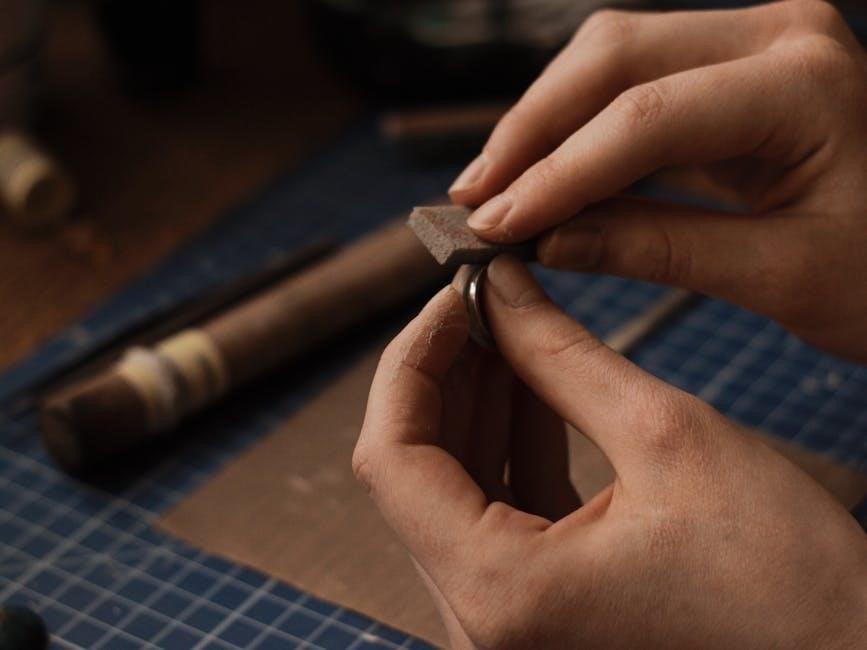
Patient Information and Education
Patient education is crucial for safe and effective PICO 7 use. Patients should understand therapy basics, device operation, and proper wound care. Keep the handbook accessible for reference.
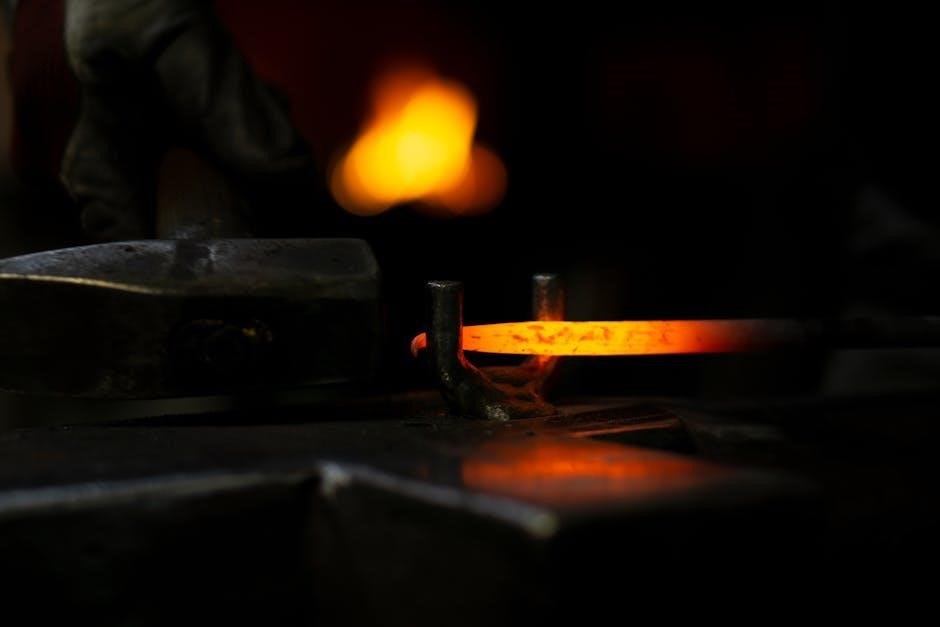
7.1 What Patients Should Know
Patient education is crucial for the safe and effective use of the PICO 7 system. Patients should understand the purpose of negative pressure wound therapy (NPWT) and how the PICO 7 system operates. They should be informed about the importance of following the healthcare professional’s instructions and the proper care of the device. Patients should also be aware of the signs of potential issues, such as air leaks or low battery indicators, and know when to seek assistance. Additionally, patients should be advised on how to handle the device during daily activities and how to monitor the wound for any changes. This knowledge helps ensure the therapy is effective and minimizes complications.
7.2 Caregiver Responsibilities
Caregivers play a vital role in supporting patients using the PICO 7 system. They should assist with monitoring the device, ensuring the dressing remains secure, and checking for any signs of issues, such as air leaks or low battery indicators. Caregivers should also help patients follow the healthcare professional’s instructions, including maintaining proper hygiene and attending follow-up appointments. They are responsible for providing emotional support and helping patients with daily activities while using the device. Caregivers should familiarize themselves with the user manual and understand basic troubleshooting steps. If any concerns arise, they should promptly consult a healthcare professional to ensure the therapy remains effective and safe. Their involvement is key to optimizing the patient’s healing process.
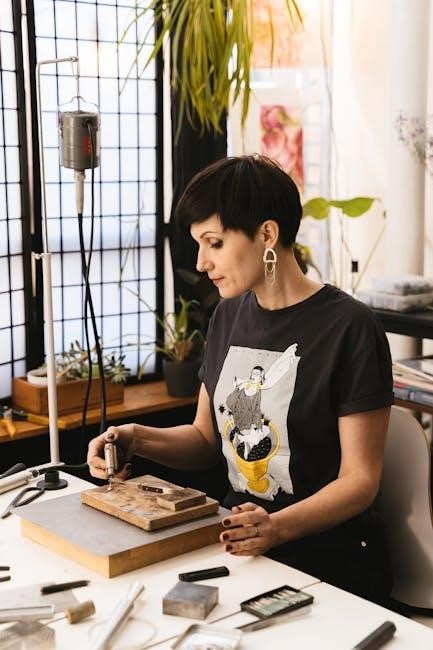
7.3 Answering Frequently Asked Questions
Patient and caregiver inquiries about the PICO 7 system often focus on its operation and benefits. Common questions include how the device applies negative pressure, its portability, and its suitability for various wound types. Many ask about the visual indicators and what they signify, such as the green OK indicator showing proper function or the orange leak indicator signaling an issue. Caregivers frequently inquire about troubleshooting steps, like resolving air leaks or addressing low battery alerts. Patients may also ask about comfort, noise levels, and how to manage the device during daily activities. Addressing these questions ensures proper use and helps patients and caregivers feel confident in managing the therapy effectively. Providing clear, concise answers supports a smooth and successful treatment experience for all users.

Technology and Innovation
The PICO 7 system features advanced AIRLOCK Technology, ensuring consistent negative pressure delivery. Its single-use design simplifies application and reduces infection risks, enhancing wound healing outcomes significantly.
8.1 AIRLOCK Technology
The AIRLOCK Technology in the PICO 7 system is a proprietary feature designed to maintain consistent negative pressure wound therapy (NPWT). This innovative technology helps prevent air leaks, ensuring uninterrupted therapy delivery. By minimizing interruptions, AIRLOCK Technology promotes faster wound healing and reduces the need for frequent dressing changes. It also enhances patient comfort by maintaining a secure seal, even on challenging wound surfaces. The technology is integrated into the system’s design, making it easy for healthcare professionals to apply and monitor. Clinical evidence supports its effectiveness in managing various wound types, including surgical and chronic wounds. This advancement underscores Smith & Nephew’s commitment to improving wound care outcomes through innovative solutions.
